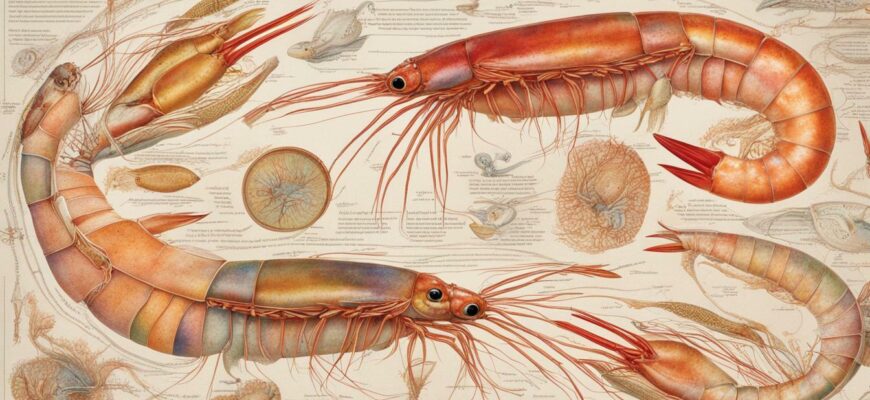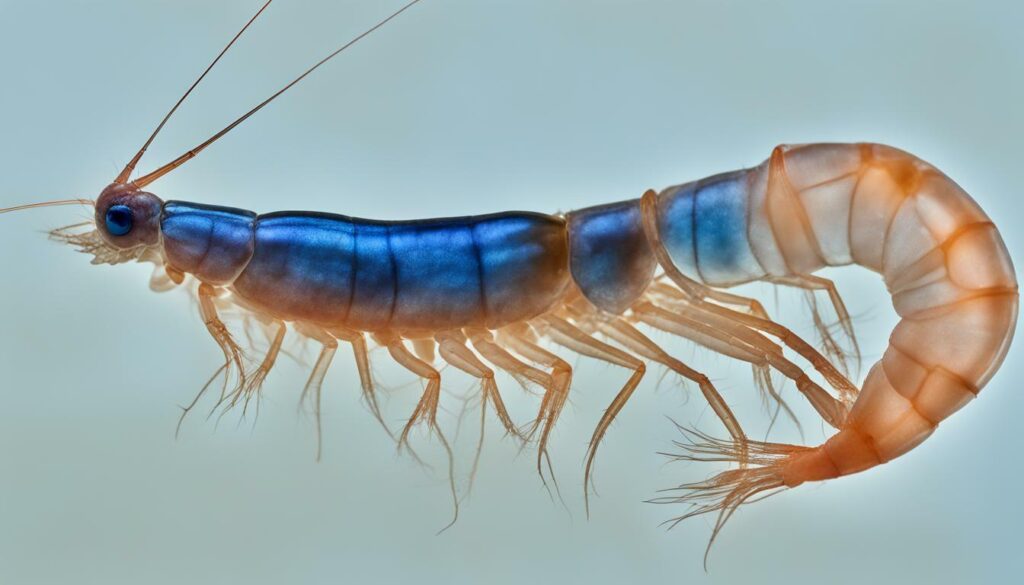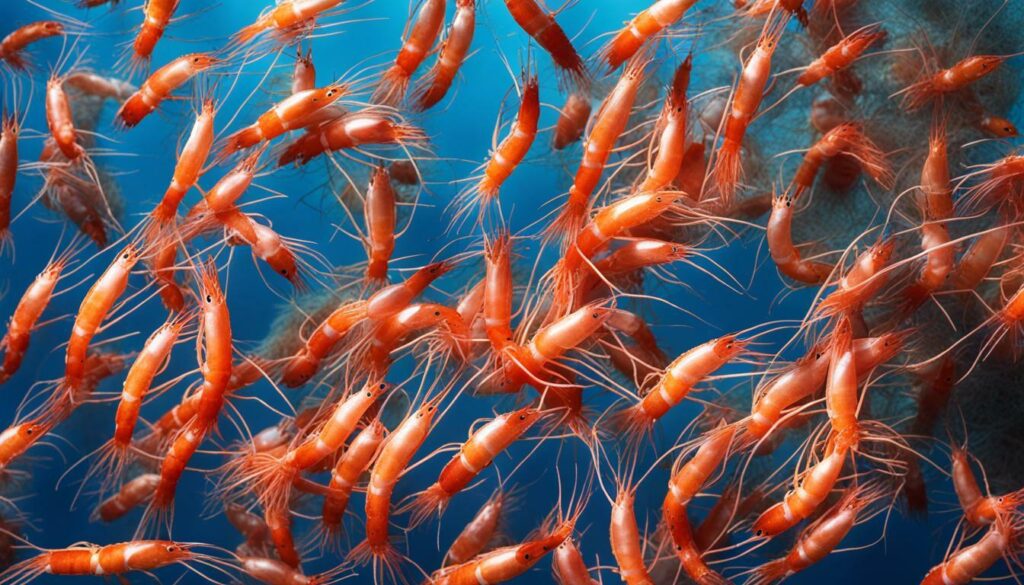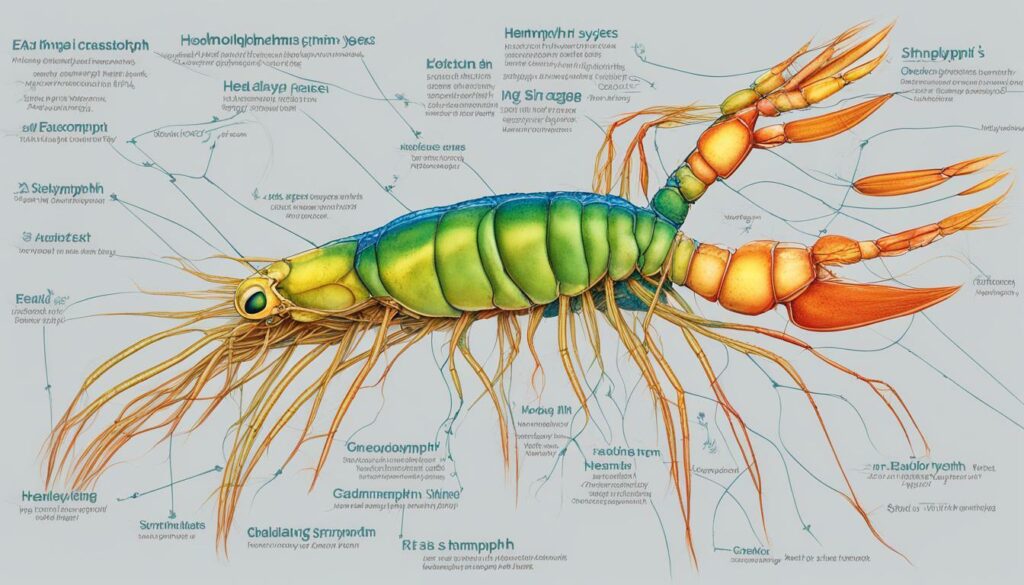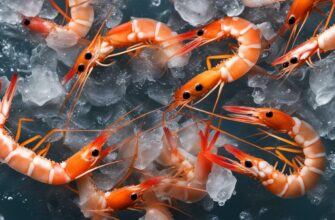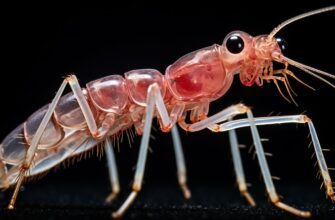Most of us are familiar with the idea of blood as a vital component of human anatomy. But when it comes to shrimp, things get a little more complicated. So do shrimp have blood? The answer may surprise you.
Before we dive into the specifics of shrimp physiology, let’s review what blood is and why it’s so important. Blood is a fluid that circulates through the circulatory system, delivering oxygen and nutrients to cells throughout the body and removing waste products. It also helps regulate body temperature and plays a key role in immune function.
Now that we’ve established the basics, let’s explore the fascinating world of shrimp circulatory systems.
- Key Takeaways:
- Understanding the Shrimp Circulatory System
- Understanding the Shrimp Circulatory System
- The Role of Hemolymph in Shrimp Physiology
- The Unique Qualities of Shrimp Hemolymph
- How Shrimp Hemolymph Protects and Heals
- Comparing Shrimp Circulatory Systems to Other Animals
- Conclusion
- FAQ
- Q: Do shrimp have blood?
- Q: What is hemolymph?
- Q: How does hemolymph protect and heal shrimp?
- Q: What are the unique qualities of shrimp hemolymph?
- Q: How does the shrimp circulatory system compare to other animals?
Key Takeaways:
- Shrimp do not have blood in the traditional sense like humans.
- Shrimp have a fluid called hemolymph that serves a similar purpose to blood.
- Hemolymph transports oxygen, nutrients, hormones, and waste products throughout a shrimp’s body.
Understanding the Shrimp Circulatory System
While humans and many other animals have blood as part of their circulatory system, shrimp possess a fluid called hemolymph that serves a similar purpose. Hemolymph is a colorless fluid that carries nutrients, hormones, and waste products throughout a shrimp’s body. Despite its name, hemolymph is not “blood” in the traditional sense, as it does not contain red blood cells or hemoglobin.
So how does hemolymph flow throughout a shrimp’s body? Shrimp have an open circulatory system that pumps hemolymph through their bodies via a tubular heart that runs along their dorsal side. The hemolymph flows through a network of vessels and sinuses, essentially bathing the organs and tissues in the fluid.
The anatomy of a shrimp is also unique, with their bodies divided into two main parts: the cephalothorax (head and thorax) and the abdomen. The heart and major blood vessels are located in the cephalothorax, while the hemolymph flows through the gills, which are located in the abdomen.
To compare and contrast, other crustaceans also have hemolymph as part of their circulatory system. However, the composition of their hemolymph can vary depending on the species and environment they live in.
Understanding the Shrimp Circulatory System
The hemolymph in shrimp serves a crucial role in their physiology. One of its primary functions is the transportation of oxygen. Hemolymph diffuses oxygen into the shrimp’s tissues and collects carbon dioxide, which is then released through their gills. Hemolymph also plays a role in distributing nutrients throughout the body and removing waste products.
In addition to its transport functions, hemolymph is also involved in the immune response and temperature regulation. Hemolymph contains various cells and proteins that help defend against pathogens, and also plays a role in clotting and wound healing. Hemolymph can also act as a heat sink, helping to regulate the shrimp’s body temperature.
Overall, the unique circulatory system of shrimp and the role of hemolymph in their physiology reveals the fascinating adaptations of these creatures. As we continue to explore the world around us, it’s important to appreciate the diversity of life and the amazing ways in which different organisms have evolved to thrive in their environments.
The Role of Hemolymph in Shrimp Physiology
While shrimp may not have blood in the traditional sense, their circulatory system still plays a crucial role in their physiology. Instead of blood, shrimp have a fluid known as hemolymph which serves a similar function. Hemolymph is a clear, colorless fluid that can vary in color depending on the shrimp’s diet and environment. It is pumped through the shrimp’s circulatory system by a muscular heart located in the thorax.
The primary function of hemolymph in shrimp physiology is to transport oxygen, nutrients, hormones, and waste products throughout the body. Hemolymph also serves as the shrimp’s immune system, helping to defend against pathogens and foreign invaders. Additionally, hemolymph plays a role in temperature regulation, aiding in maintaining a stable internal temperature in varying environments.
Hemolymph is composed of various cells and proteins that aid in its functions. These include hemocytes, which are responsible for fighting infections and promoting wound healing, and clotting factors, which help to control bleeding. Other proteins, such as enzymes and hormones, help regulate various physiological processes in the shrimp’s body.
Understanding the role of hemolymph in shrimp physiology is important not only for understanding these creatures but also for studying and conserving their populations. Research into the unique circulatory system of shrimp could lead to advances in aquaculture and development of more sustainable practices in the fishing industry.
“Hemolymph is composed of various cells and proteins that aid in its functions.”
The Unique Qualities of Shrimp Hemolymph
While shrimp have a circulatory system that serves a similar purpose to blood in transporting nutrients and oxygen throughout their body, their fluid is called hemolymph. Unlike human blood, it does not contain red blood cells or hemoglobin. Additionally, hemolymph does not have a set color and can vary depending on a shrimp’s diet and environment.
Despite these differences, hemolymph plays a vital role in shrimp physiology. It contains numerous cells and proteins that help defend against pathogens and promote wound healing. Hemolymph also aids in temperature regulation and is crucial in the molting process by supplying the necessary nutrients and minerals for the growth of a new exoskeleton.
One component of hemolymph that sets it apart from human blood is the presence of hemocyanin. This protein, which contains copper, helps transport oxygen throughout the shrimp’s body. Hemocyanin gives hemolymph a blue-green color when oxygenated, which can differ from the bright red color we associate with oxygenated human blood.
Overall, the unique qualities of shrimp hemolymph make it a fascinating area of study for scientists. While it may not have the same properties as human blood, it plays a crucial role in the survival and health of shrimp.
How Shrimp Hemolymph Protects and Heals
Shrimp hemolymph serves a vital role in protecting and healing their bodies. Hemolymph contains various cells and proteins that help defend against pathogens and promote healing.
One significant way hemolymph protects shrimp is through the presence of hemocytes, which are immune cells similar to white blood cells in humans. Hemocytes can recognize and eliminate foreign invaders such as bacteria and viruses. In addition to hemocytes, hemolymph also contains antimicrobial peptides that help neutralize pathogens.
When shrimp are injured, hemolymph plays a critical role in the healing process. Hemolymph contains clotting factors that help stop bleeding and form clots to seal wounds. Additionally, hemolymph contains growth factors that promote tissue regeneration and healing.
Interestingly, hemolymph also plays a role in shrimp molting. Before molting, a shrimp will absorb certain minerals from its shell and store them in its hemolymph. During the molting process, the shrimp will reabsorb these minerals from the hemolymph to create a new, larger shell.
Overall, the unique qualities of shrimp hemolymph make it a crucial component of shrimp physiology. Its ability to protect against pathogens, promote healing, and aid in molting highlights the important role it plays in the survival and growth of shrimp populations.
Comparing Shrimp Circulatory Systems to Other Animals
While the circulatory system of shrimp may seem vastly different from those of other animals, there are some similarities. For example, shrimp, like other animals, require oxygen to survive and their circulatory system plays a crucial role in delivering oxygen to their cells. However, the way this is achieved in shrimp is quite unique.
Unlike humans and many other animals that have closed circulatory systems where blood is contained within vessels, shrimp have an open circulatory system. This means that their hemolymph is pumped through their body cavity and directly bathes their organs and tissues. This allows for more direct exchange of nutrients and waste, making it especially efficient for small animals like shrimp.
Another important difference in shrimp circulatory systems is the lack of red blood cells. In humans and other vertebrates, red blood cells are responsible for carrying oxygen throughout the body. However, in shrimp, it is the hemolymph itself that carries oxygen via a protein called hemocyanin. Hemocyanin is a copper-containing protein that gives hemolymph its blue-green color.
The circulatory system of shrimp also differs from that of other animals in the way it responds to changes in temperature. Shrimp are ectothermic, which means their body temperature is regulated by their environment. When the temperature drops, their metabolism slows down, and the fluidity of their hemolymph decreases. This can lead to sluggish movement and other issues. However, shrimp have a unique ability to adjust the composition of their hemolymph in response to changes in temperature, helping to maintain proper circulation and function.
All of these unique adaptations in the circulatory system of shrimp have evolved over millions of years to help these small creatures survive and thrive in their environment.
Conclusion
While the idea of shrimp having “blood” may seem confusing, an understanding of their unique circulatory system is crucial. Shrimp have a fluid called hemolymph that serves a similar purpose to blood, transporting oxygen, nutrients, hormones, and waste products throughout their bodies. Hemolymph also plays a vital role in the immune response and temperature regulation in shrimp.
Despite the lack of red blood cells and certain proteins found in human blood, hemolymph contains various cells and proteins that help defend against pathogens and promote wound healing. Additionally, the regenerative abilities of hemolymph play a crucial role in the molting process of shrimp.
Overall, the circulatory system of shrimp is a fascinating area of research that highlights the unique evolutionary adaptations of these marine creatures. Understanding the role of hemolymph in shrimp physiology can provide valuable insights into potential future applications in the fields of medicine and biotechnology.
FAQ
Q: Do shrimp have blood?
A: No, shrimp do not have blood in the traditional sense like humans. They have a fluid called hemolymph that serves a similar purpose.
Q: What is hemolymph?
A: Hemolymph is a fluid that circulates throughout a shrimp’s body, transporting oxygen, nutrients, hormones, and waste products.
Q: How does hemolymph protect and heal shrimp?
A: Hemolymph contains various cells and proteins that help defend against pathogens and promote wound healing in shrimp. It also plays a role in the molting process.
Q: What are the unique qualities of shrimp hemolymph?
A: Shrimp hemolymph is not red like human blood and its color can vary depending on the shrimp’s diet and environment. It also lacks red blood cells and certain proteins found in human blood.
Q: How does the shrimp circulatory system compare to other animals?
A: The circulatory system of shrimp has unique evolutionary adaptations. While there are similarities and differences with other animals, shrimp have a specialized system that suits their physiological needs.

